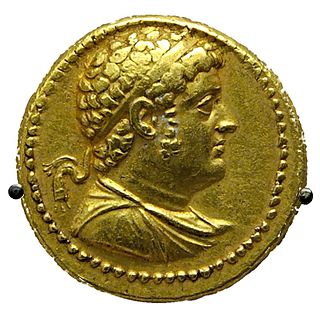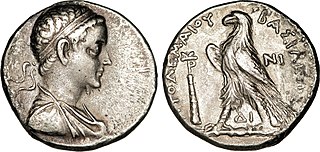Ankhwennefer may refer to:
| | This disambiguation page lists articles associated with the title Ankhwennefer. If an internal link led you here, you may wish to change the link to point directly to the intended article. |
Ankhwennefer may refer to:
| | This disambiguation page lists articles associated with the title Ankhwennefer. If an internal link led you here, you may wish to change the link to point directly to the intended article. |

The Rosetta Stone is a granodiorite stele inscribed with three versions of a decree issued in Memphis, Egypt in 196 BC during the Ptolemaic dynasty on behalf of King Ptolemy V Epiphanes. The top and middle texts are in Ancient Egyptian using hieroglyphic and Demotic scripts respectively, while the bottom is in Ancient Greek. The decree has only minor differences between the three versions, making the Rosetta Stone key to deciphering the Egyptian scripts.

Ptolemy IV Philopator, son of Ptolemy III and Berenice II, was the fourth Pharaoh of Ptolemaic Egypt from 221 to 204 BC.

Ptolemy V Epiphanes, son of the siblings Ptolemy IV Philopator and Arsinoe III of Egypt, was the fifth ruler of the Ptolemaic dynasty from July/August 204 to September 180 BC.
Horwennefer, also known as Hurganophor, Haronnophris, Harmachis, Hyrgonaphor, Herwennefer, or Hugronaphor, was an Upper Egyptian who led Upper Egypt in secession from the rule of Ptolemy IV Philopator in 205 BC. No monuments are attested to this king but along with his successor Ankhwennefer he held a large part of Egypt until 186 BC. A graffito dating to about 201 BC on a wall of the mortuary Temple of Seti I at Abydos, in which he is called by the Greek name Hyrgonaphor, is an attestation to the extent of his influence. He appears to have died before 197 BC.
Ankhwennefer, also known as Chaonnophris or Ankhmakis, was the successor of Horwennefer, a rebel ruler who controlled much of Upper Egypt during the reigns of Ptolemies IV and V. His rule lasted from approximately 200 to 185 BC.
This page list topics related to ancient Egypt.
Ankhwennefer was an ancient Egyptian vizier of the 26th Dynasty, who was in office under king Psamtik I.